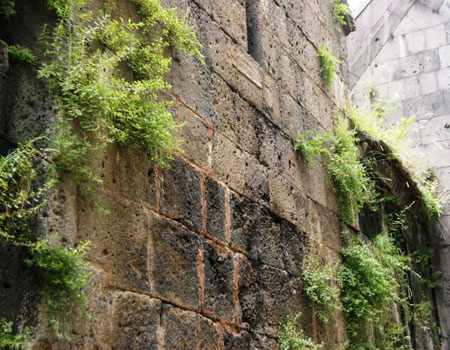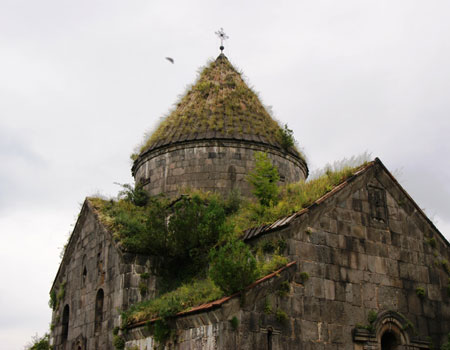In 1972, UNESCO approved the Convention Concerning the Protection of World Cultural and Natural Heritage. The UNESCO World Heritage Committee meets at least once a year and makes decisions on natural and cultural sites around the world that should be included in the World Heritage list. There are currently 8 such sites in Armenia up for consideration, one of which is the Sanahin Monastery in Lori marz (province), assumed to be built in the 10th century. The rules of membership into the UNESCO World Heritage list include a number of obligations assumed by state authorities to preserve and maintain the sites.
However, during a Jul. 16 tour for media representatives organized by local civic initiative “We won’t be silent,” an Epress.am reporter saw how a possible UNESCO World Heritage site is being preserved. The Sanahin monastic complex is in a deplorable state. The St. Mary (Sourb Astvatsatsin) and Holy Redeemer (Amenaprkich) churches, the three cupolas, the book depository, the bell tower, the academy, and the St. Gregory chapel are completely covered in vegetation, and there are even trees growing on the walls of the monastery. There are puddles of water inside the monastery and the ceiling leaks when it’s raining.
The Sanahin monastic establishment was founded by Armenian King Ashot G. Voghormats in 966 CE (Common Era). It became the Kyurikyans’ (Kyurikids’) administrative center and the family mausoleum (till 12th century), as well as the bishop’s seat of the church diocese of the Kyurikyan kingdom (till 11th century). In the 10th–11th centuries, the monastery was a cultural center with an advanced school and rich library.
At the end of the 12th century, as part of the canton of Tashir, Sanahin became the Zakaryans’ (Zakharid) property and ancestral sepulcher. The monastery later again became an educational and cultural center and donations allowed large estates to be acquired.
 Epress.am News from Armenia
Epress.am News from Armenia

